Over the course of the past ten years or so I dreamed of building a cabin somewhere in remote Alaska. Although there have been many criteria over the years, a few of the most important factors in my mind included: close to a navigable river, a significant distance from civilization, and built entirely by yours-truly… In May of 2012 I moved to Alaska to start figuring out how to make this dream a reality. I have spent the last three summers working for the National Park Service; both maintaining and improving cabins along the Yukon River. I suffered through one winter (2012-2013) in Fairbanks were I worked for a weatherization outfit, improving the energy efficiency of low to moderate income homes where heat loss was a concern. Currently I sell firewood to the residents of Eagle, and Eagle Village to keep the bill collectors at bay.
Location
In April of 2014 I bought an acre about 5 miles from the small town of Eagle Alaska (pop ~200 in the summer). I chose Eagle for several reasons such as the proximity to the Yukon River, the distance from chain food restaurants, and box stores, but the most important reason was… this is where my girlfriend already lived. She has been an invaluable resource, partner, designer, and builder in the quest to complete my first log cabin.
Eagle is about 180 miles down the gravel road know as the Taylor Highway from the town of Tok, and almost 400 miles from Fairbanks. The closest hardware store is in Tok, and the closest Wal-Mart, Pizza Hut, or the like is in Fairbanks. With resources so far away you learn quickly that if you think you are going to need it, you better buy it when you can. I almost forgot to mention you can only drive out of Eagle between mid April and mid October, because the road is closed the rest of the time. In the winter the only real way to get out of town is by airplane.
The exact piece of ground; turned out to be a fairly easy question to answer because there was only one property for sale outside the city limits that also fit my budget. The land has a mixture of dense Black and White Spruce, Aspen, some Birch, and several wild rose bushes. After the land was purchased we wandered the small wooded lot imagining where the house would sit. The only real factors influencing this were: distance from the road – hoping to build the cabin not entirely visible from the dirt road the property boarders, elevation – trying to avoid any low spots that might prove soggy during the spring/summer melt, and attempt to save the biggest best looking trees. With the location roughly staked we began clearing the land; stacking the dry wood for firewood, the green wood for crude construction, and burning the slash. After the house site was cleared we also cleared an area for a storage tent, and equipment.
Foundation
Mid May in the interior of Alaska is not the best time to start trying to dig a foundation by hand. Although I already had a good idea this would be the case it did not deter me from breaking ground, or ice I should say. Even though the snow had melted a few weeks ago, the ground was frozen, and would only allow a few inches to be scraped and chipped at a time. Over the course of the month we managed to dig 11 holes large enough to bury 55 gallon drums about 2/3rds of the way into the ground. Initially I had planned to fill the barrels with concrete and call them pillars, but when I discovered how much concrete that was going to require; I altered the plan to include pillars filled with gravel and large rock, then covered with a few inches of concrete on top. The four corner barrels have 1/2in rebar protruding out of the concrete about 18” to hold the lower logs in place.
While placing the barrels and closing in on being ready to build, we received a great offer from a neighbor with a backhoe to dig a root cellar, and graciously accepted. The root cellar was cribbed in with treated plywood and 2×4’s. I went ahead and built plywood shelves as I was back-filling around the root cellar to give the walls some added structural support.
Logging
The most time consuming aspect of the cabin build was probably the logging. Despite having spent two summers and a winter in Eagle prior to doing any logging, I did not fully grasp how far we would have to go to find suitable logs for this project. The criteria for these logs was primarily; standing, dead, and dry logs that would make a 6” tall log after milling. Because many of the residents of Eagle utilize wood burning as a means of heating their homes, and I’m not the first resident of Eagle with a dream to build a log cabin, anything close to town is fairly well picked clean. One of our best logging locations was approximately 90 miles from the building site. In a good load we could haul between 20 and 30 logs that would be suitable for the cabin. Because of the distance to the logging woods, and the time it took to fill the trailer, we spent several nights camping during our logging runs.
The majority of the logging was done with 4 wheelers. After cutting a tree down I would limb it, and tie it to the back rack of the 4 wheeler so it could be drug back to the trailer. Some of the larger logs that later made 8” tall logs required two 4 wheelers hooked in tandem. I failed to accurately estimate the size 4 wheeler it would require to haul such logs initially, but thanks to the same neighbor with the backhoe, we had help in the form of 3 additional capable machines, and one experienced operator.
Milling
I chose to mill all my cabin logs to make them easier to stack, and to give the inside of the house a flat wall for hanging pictures or shelves. The idea of a chainsaw mill was something I was aware of, but knew very little about. I had initially planned on using an “Alaskan Mill”, and could not be more pleased I went another route. The Alaskan Mills do have their place in remote building, but I would not attempt to build a large structure with them. I discovered one of the locals in Eagle had a chainsaw mill that he had used to build a cabin far more remote than mine a few years earlier, and to make the story better; he didn’t mind loaning it to me! This mill is homemade, but built off the pattern of a “ Woodbug Sawmill”. It incorporates a set of rails that clamp together, and allow a trolly, with chansaw bolted on, to roll down a strait path making a flat cut. The mill was loaned but I had to buy the saw. According to the mill owner he had used a Husquvarna saw with a 95cc motor. I chose a Stihl MS 660 with a 91 cc motor, mostly because I am more familiar with the Stihl chainsaws.
Having figured out the basics of location, foundation, logging, and milling, we will discuss the design and building of the floor, walls, and outhouse next week.

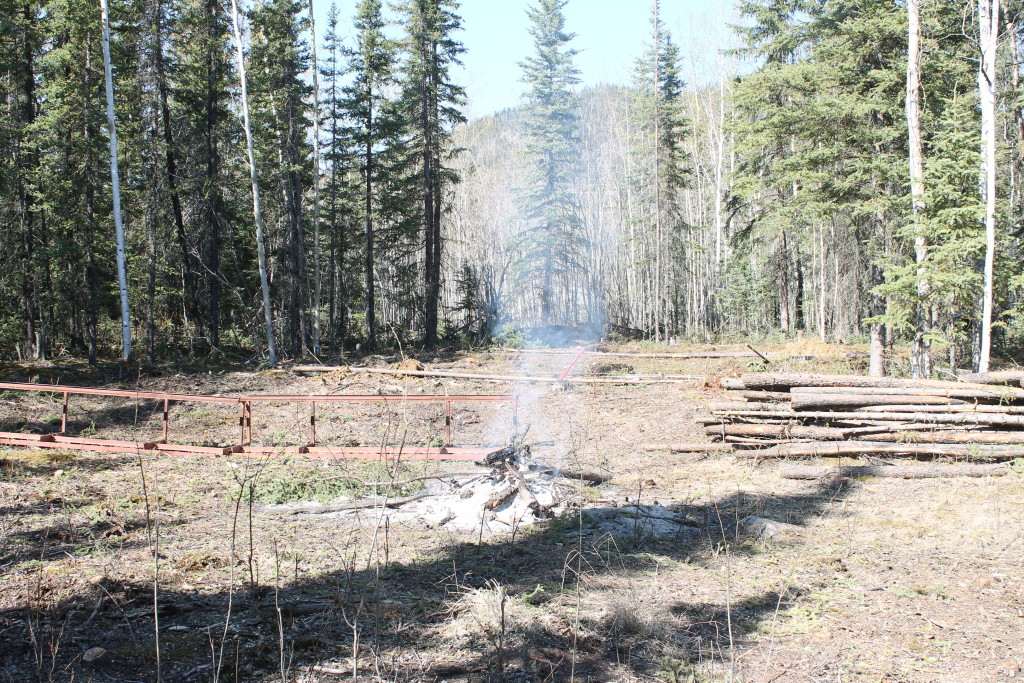
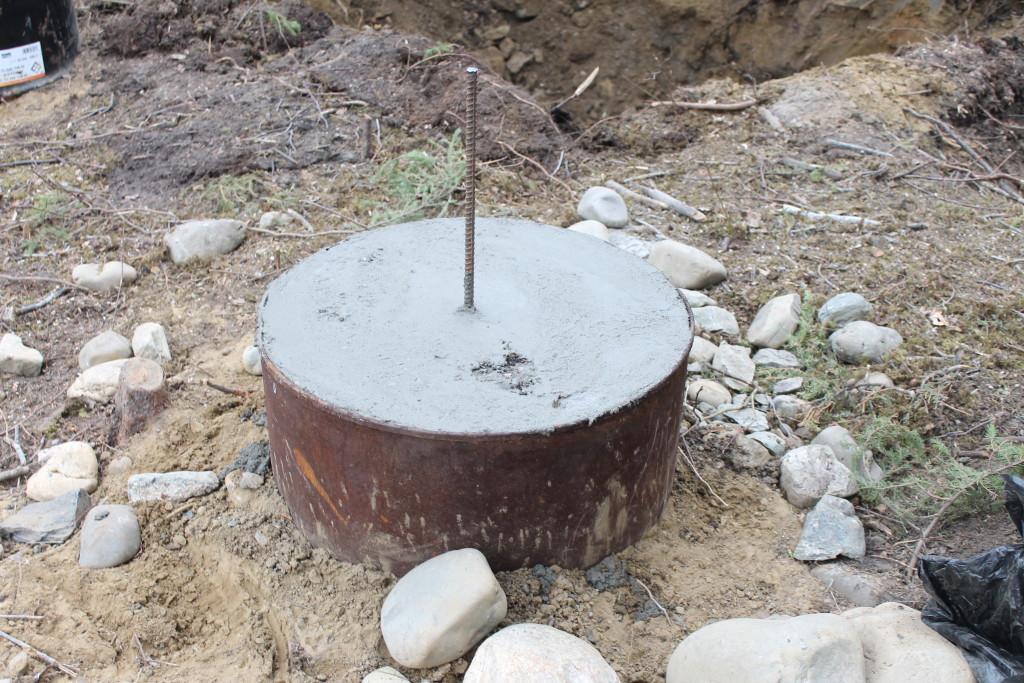
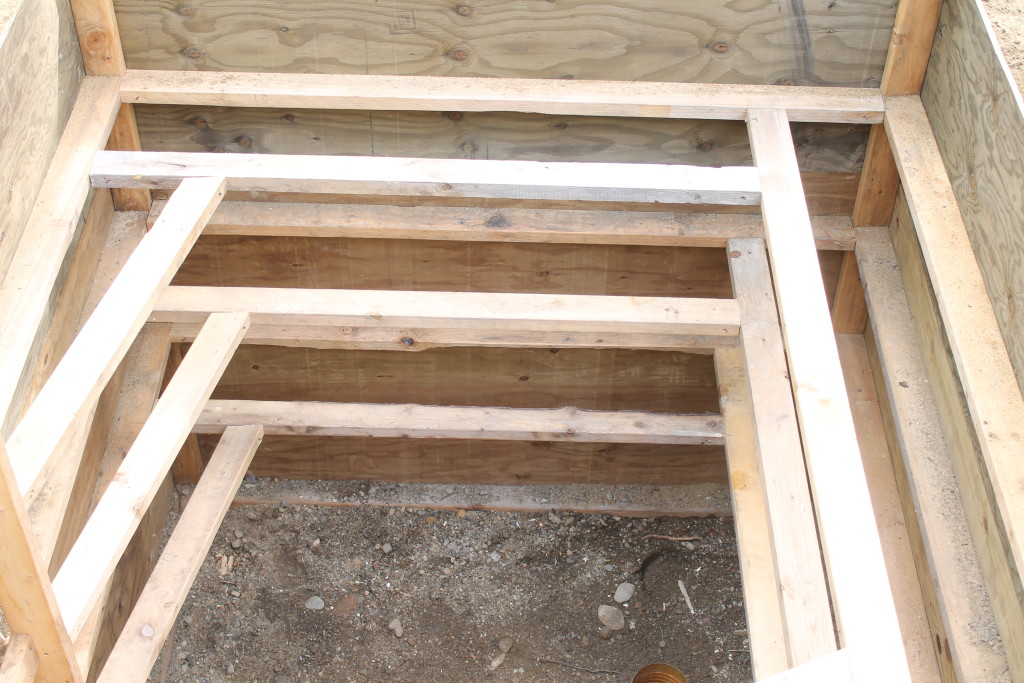
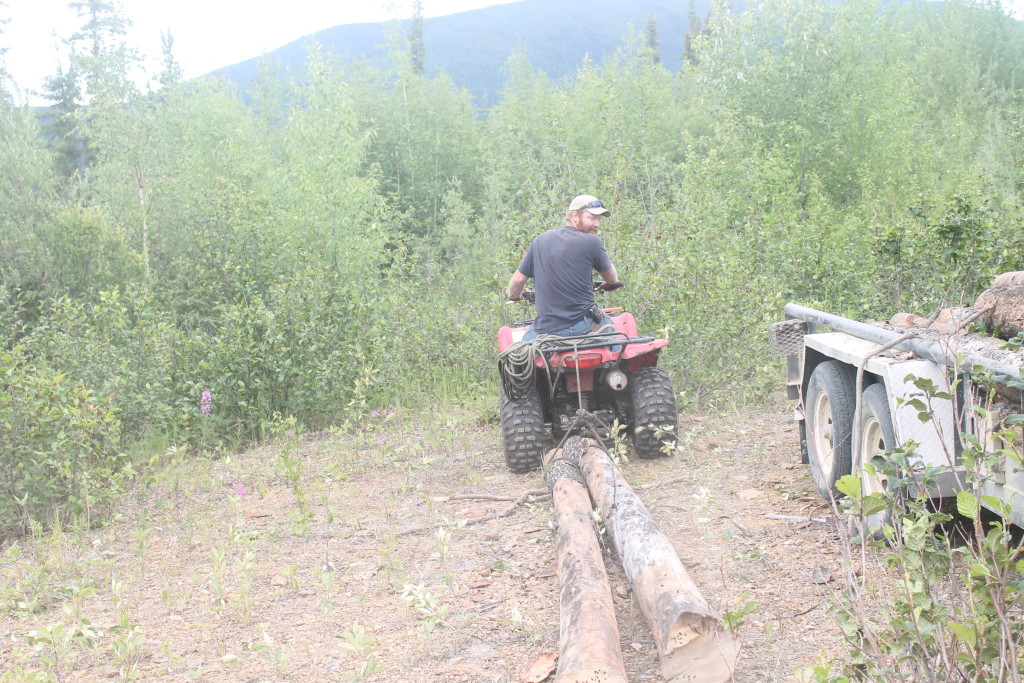
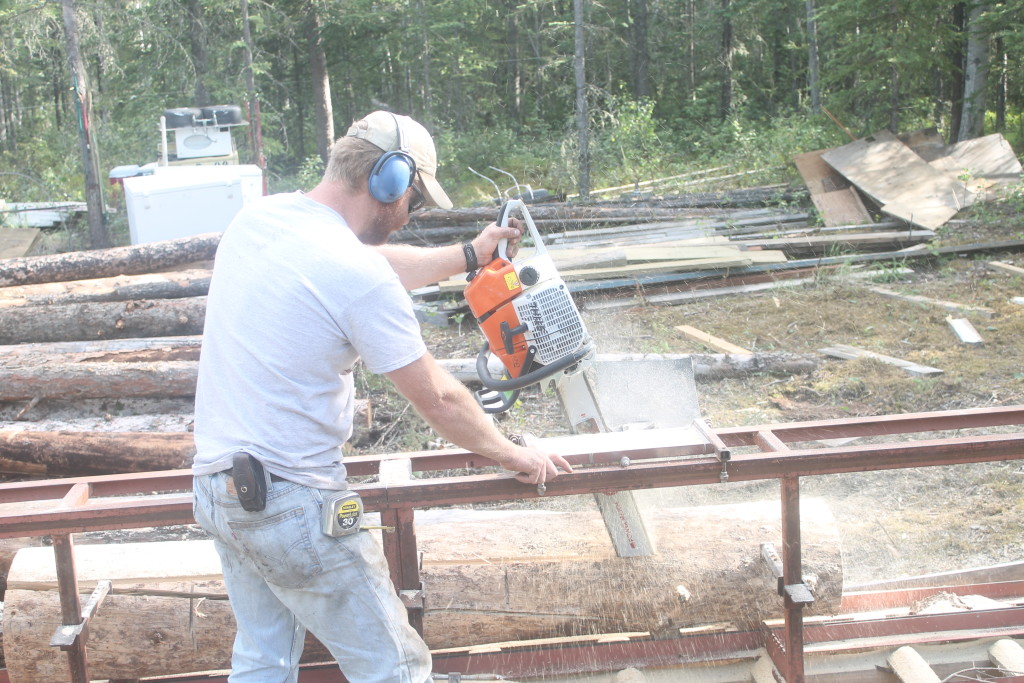
Gary
I am in Tennessee USA and also have an original woodbug. It uses a 30 Bar with a special tip. The Bar has become defective and I was wondering if you know of where the bar end (with a square of metal) on each side to keep it in the wood bug slot.
Of course if worse comes to worse, I can measure the squares and place them on a new bar myself.
Thanks